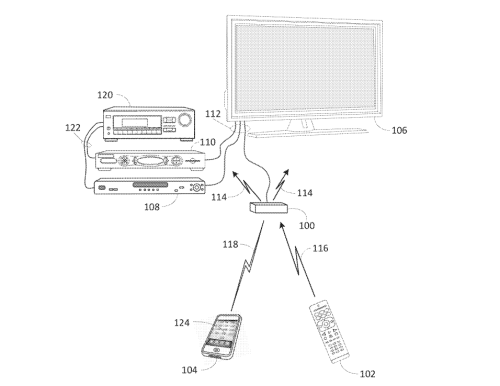By Dennis Crouch
A group of sixty US intellectual property law professors have signed a letter to Congress supporting anti-troll patent reform legislation. This effort was driven by Professor Love of Santa Clara and is also signed by Professors Bessen, Goldman, Ghosh, Lemley, Meurer, Samuelson, Sprigman, and others. [Download ProfessorsLetterOnTrolls].
A key introductory line from the letter:
Despite our differences, we all share concern that an increasing number of patent owners are taking advantage of weaknesses in the system to exploit their rights in ways that on net deter, rather than encourage, the development of new technology.
The basic argument is that patent litigation is expensive and frontloaded in such a way that "creates an opportunity for abuse" because early-state settlement is focused more on the cost of litigation rather than the value of the patent or its underlying technology. And, it is the recent "rise of patent assertion entities" that has "disrupted [the] delicate balance" of the patent system.
The professors propose the following six general reforms:
- To discourage weak claims of patent infringement brought at least in part for nuisance value, we recommend an increase in the frequency of attorneys' fee awards to accused patent infringers who choose to fight, rather than settle, and ultimately defeat the infringement allegations levelled against them.
- To reduce the size and front-loaded nature of patent litigation costs, we recommend limitations on the scope of discovery in patent cases prior to the issuance of a claim construction order, particularly with respect to the discovery of electronic materials like software source code, emails, and other electronic communications.
- To further protect innocent retailers and end-users that are particularly vulnerable to litigation cost hold-up, we recommend that courts begin to stay suits filed against parties that simply sell or use allegedly infringing technology until after the conclusion of parallel litigation between the patentee and the technology's manufacturer.
- To facilitate the early adjudication of patent infringement suits, we recommend that patentees be required to plead their infringement allegations with greater specificity.
- [To increase transparency and confidence in the market for patent licensing, we recommend that Congress require] patentees … to disclose and keep up-to-date the identity of parties with an ownership stake or other direct financial interest in their patent rights.
- [To increase transparency and confidence in the market for patent licensing, we recommend that] Congress consider additional legislation designed to deter fraudulent, misleading, or otherwise abusive patent licensing demands made outside of court.
Without a doubt, there is merit to the professors' case, although I bristle at the letter's broad-brush statements and overt stance that is pro-large-corporate-entity. I have a few thoughts regarding the specific suggestions:
(1): Anti-plaintiff fee shifting will have the obvious impact of altering the availability of contingency-fee counsel which may be the motivation of the suggestion. One problem is that almost every patent in litigation is amenable to a good-faith challenge on either invalidity or non-infringement grounds. Predicting winners and losers is a difficult prospect and this gives me little faith that the fee-shifting proposal will primarily target low-quality claims but instead will target risk-averse plaintiffs. The professors' suggestion here to reward non-settlement does not provide me with any confidence that overall litigation costs will be reduced. On the other hand, this proposal (especially if focused on invalidating patents) could serve as something like a bounty for attorneys to challenge bad patents and, as a consequence, would lessen the free-rider problem associated with a single company challenging a patent that is also being asserted against competitors.
(2) & (4): I agree that there is plenty room for reducing discovery costs and for raising pleading requirements without substantially harming patentee rights. However, one problem for both software and method patents is that some forms of infringement are difficult to truly pin-down absent discovery. Some work must be done on any particular proposals to ensure that the result is not a clear pathway unactionable infringement.
(3) Regarding customer lawsuits, we have a difficulty in line drawing because, for the most part, these are not simply customer lawsuits. Rather, the patents being asserted cover particular methods or systems that take advantage of a particular device on-the-market (such as a wireless router or flat-panel television). In this situation, the differences are such that the manufacturer and retailer typically refuse to honor their implied warrantee that the good is "free of the rightful claim … of infringement or the like." UCC 2-312(3). And so, the question is whether these use cases will fit within the definition. One reason for the downstream lawsuits is that downstreamers typically value the technology more than upstreamers with the result of greater damage award. (We know the downstreamers valued it more because they purchased it from the upstreamers). Since the exhaustion doctrine only allows a patentee to recoup at one point in the stream-of-commerce, it makes sense that they would focus on the highest valued user.
= = = = =
Text of the letter:
To Members of the United States Congress:
We, the undersigned, are 60 professors from 26 states and the District of Columbia who teach and write about intellectual property law and policy. We write to you today to express our support for ongoing efforts to pass patent reform legislation that, we believe, will improve our nation's patent system and accelerate the pace of innovation in our country.
As a group we hold a diversity of views on the ideal structure and scope of our nation's intellectual property laws. Despite our differences, we all share concern that an increasing number of patent owners are taking advantage of weaknesses in the system to exploit their rights in ways that on net deter, rather than encourage, the development of new technology.
Several trends, each unmistakable and well supported by empirical evidence, fuel our concern. First, the cost of defending against patent infringement allegations is high and rising. The American Intellectual Property Law Association estimates that the median cost of litigating a moderately-sized patent suit is now $2.6 million, an amount that has increased over 70% since 2001. These and other surveys suggest that the expense of defending even a low-stakes patent suit will generally exceed $600,000. Moreover, the bulk of these expenses are incurred during the discovery phase of litigation, before the party accused of infringement has an opportunity to test the merits of the claims made against it in front of a judge or jury.
The magnitude and front-loaded nature of patent litigation expenses creates an opportunity for abuse. Patent holders can file suit and quickly impose large discovery costs on their opponents regardless of the validity of their patent rights and the merits of their infringement allegations. Companies accused of infringement, thus, have a strong incentive to fold and settle patent suits early, even when they believe the claims against them are meritless.
Historically, this problem has largely been a self-correcting one. In suits between product-producing technology companies, the party accused of infringement can file a counterclaim and impose a roughly equal amount of discovery costs on the plaintiff. The costs, though high, are symmetrical and, as a result, tend to encourage technology companies to compete in the marketplace with their products and prices, rather than in the courtroom with their patents.
In recent years, however, a second trend – the rise of "patent assertion entities" (PAEs) – has disrupted this delicate balance, making the high cost of patent litigation even more problematic. PAEs are businesses that do not make or sell products, but rather specialize in enforcing patent rights. Because PAEs do not make or sell any products of their own, they cannot be countersued for infringement. As a result, PAEs can use the high cost of patent litigation to their advantage. They can sue, threaten to impose large discovery costs that overwhelmingly fall on the accused infringer, and thereby extract settlements from their targets that primarily reflect a desire to avoid the cost of fighting, rather than the chance and consequences of actually losing the suit.
To be sure, PAEs can in theory play a beneficial role in the market for innovation and some undoubtedly do. However, empirical evidence strongly suggests that many PAEs have a net negative impact on innovation. Technology companies – which, themselves, are innovators – spend tens of billions of dollars every year litigating and settling lawsuits filed by PAEs, funds that these tech companies might otherwise spend on additional research and design. Surveys also reveal that a large percentage of these suits settle for less than the cost of fighting, and multiple empirical studies conclude that PAEs lose about nine out of every ten times when their claims are actually adjudicated on their merits before a judge or jury.
The impact of these suits is made more troubling by the fact that PAE activity appears to be on the rise. Empirical studies suggest that at least 40%, and perhaps as high as 59% or more, of all companies sued for patent infringement in recent years were sued by PAEs. PAE suits were relatively rare more than a decade ago, and they remain relatively rare today elsewhere in the world.
More worrisome than these bare statistics is the fact that PAEs are increasingly targeting not large tech firms, but rather small business well outside the tech sector. Studies suggest that the majority of companies targeted by PAEs in recent years earn less than $10 million in annual revenue.
When PAEs target the numerous small companies downstream in the supply chain, rather than large technology manufacturers upstream, they benefit in two ways. First, for every product manufacturer, there may be dozens or hundreds of retailers who sell the product, and hundreds or thousands of customers who purchase and use the technology. Patent law allows patent owners to sue makers, sellers, or users. Suing sellers or users means more individual targets; some PAEs have sued hundreds of individual companies. And, more targets means more lawyers, more case filings, more discovery, and thus more litigation costs overall to induce a larger total settlement amount.
Second, compared to large manufacturers, small companies like retailers are less familiar with patent law, are less familiar with the accused technology, have smaller litigation budgets, and thus are more likely to settle instead of fight. In fact, many small businesses fear patent litigation to such an extent that they are willing to pay to settle vague infringement allegations made in lawyers' letters sent from unknown companies. Like spammers, some patent owners have indiscriminately sent thousands of demand letters to small businesses, with little or no intent of actually filing suit but instead with hopes that at least a few will pay to avoid the risk.
This egregious practice in particular, but also all abusive patent enforcement to some extent, thrives due to a lack of reliable information about patent rights. Brazen patent owners have been known to assert patents they actually do not own or, conversely, to go to great lengths to hide the fact that they actually do own patents being used in abusive ways. Some patent owners have also sought double recovery by accusing companies selling or using products made by manufacturers that already paid to license the asserted patent. Still others have threatened or initiated litigation without first disclosing any specific information about how, if at all, their targets arguably infringe the asserted patents.
In short, high litigation costs and a widespread lack of transparency in the patent system together make abusive patent enforcement a common occurrence both in and outside the technology sector. As a result, billions of dollars that might otherwise be used to hire and retain employees, to improve existing products, and to launch new products are, instead, diverted to socially wasteful litigation.
Accordingly, we believe that the U.S. patent system would benefit from at least the following six reforms, which together will help reduce the cost of patent litigation and expose abusive practices without degrading inventors' ability to protect genuine, valuable innovations:
- To discourage weak claims of patent infringement brought at least in part for nuisance value, we recommend an increase in the frequency of attorneys' fee awards to accused patent infringers who choose to fight, rather than settle, and ultimately defeat the infringement allegations levelled against them.
- To reduce the size and front-loaded nature of patent litigation costs, we recommend limitations on the scope of discovery in patent cases prior to the issuance of a claim construction order, particularly with respect to the discovery of electronic materials like software source code, emails, and other electronic communications.
- To further protect innocent retailers and end-users that are particularly vulnerable to litigation cost hold-up, we recommend that courts begin to stay suits filed against parties that simply sell or use allegedly infringing technology until after the conclusion of parallel litigation between the patentee and the technology's manufacturer.
- To facilitate the early adjudication of patent infringement suits, we recommend that patentees be required to plead their infringement allegations with greater specificity.
And finally, to increase transparency and confidence in the market for patent licensing, we recommend:
- that patentees be required to disclose and keep up-to-date the identity of parties with an ownership stake or other direct financial interest in their patent rights, and
- that Congress consider additional legislation designed to deter fraudulent, misleading, or otherwise abusive patent licensing demands made outside of court.
In closing, we also wish to stress that as scholars and researchers we have no direct financial stake in the outcome of legislative efforts to reform our patent laws. We do not write on behalf of any specific industry or trade association. Rather, we are motivated solely by our own convictions informed by years of study and research that the above proposals will on net advance the best interests of our country as a whole. We urge you to enact them.
Sincerely,
John R. Allison (Texas); Clark D. Asay (Penn State); Jonathan Askin (Brooklyn); Gaia Bernstein (Seton Hall); James E. Bessen (BU); Jeremy W. Bock (Memphis); Annemarie Bridy (Idaho); Irene Calboli (Marquette); Michael A. Carrier (Rutgers); Bernard Chao (Denver); Andrew Chin (UNC); Ralph D. Clifford (UMass); Jorge L. Contreras (American); Rebecca Curtin (Suffolk); Samuel F. Ernst (Chapman); Robin Feldman (Hastings); William T. Gallagher (Golden Gate); Jon M. Garon (Northern Kentucky); Shubha Ghosh (Wisconsin); Eric Goldman (Santa Clara); Leah Chan Grinvald (Suffolk); Debora J. Halbert (Hawaii); Bronwyn H. Hall (Berkeley); Yaniv Heled (Georgia State); Christian Helmers (Santa Clara School of Business); Sapna Kumar (Houston); Mary LaFrance (UNLV); Peter Lee (Davis); Mark A. Lemley (Stanford); Yvette Joy Liebesman (SLU); Lee Ann W. Lockridge (LSU); Brian J. Love (Santa Clara); Glynn S. Lunney, Jr. (Tulane); Phil Malone (Stanford); Mark P. McKenna (Notre Dame); Michael J. Meurer (BU); Joseph Scott Miller (Georgia); Fiona M. Scott Morton (Yale); Lateef Mtima (Howard); Ira Steven Nathenson (St. Thomas); Laura Lee Norris (Santa Clara); Tyler T. Ochoa (Santa Clara); Sean A. Pager (Michigan State); Cheryl B. Preston (BYU); Jorge R. Roig (Charleston); Jacob H. Rooksby (Duquesne); Brian Rowe (Seattle); Matthew Sag (Loyola Chicago); Pamela Samuelson (Berkeley); Jason Schultz (NYU); Christopher B. Seaman (W&L); Carl Shapiro (Berkeley); Lea Shaver (Indiana); Jessica Silbey (Suffolk); Christopher Jon Sprigman (NYU); Madhavi Sunder (Davis); Toshiko Takenaka (Washington); Sarah Tran (SMU); Jennifer M. Urban (Berkeley); Samson Vermont (Charlotte)
 Edell, Shapiro & Finnan LLC, an established IP law firm, is seeking a patent attorney to join its Gaithersburg, MD office.
Edell, Shapiro & Finnan LLC, an established IP law firm, is seeking a patent attorney to join its Gaithersburg, MD office.


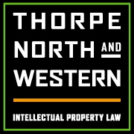


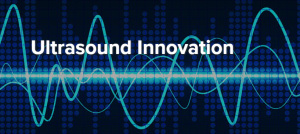
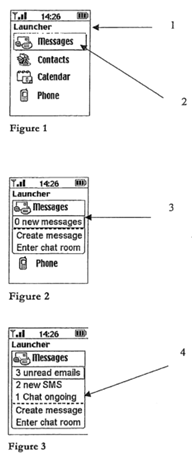 by Dennis Crouch
by Dennis Crouch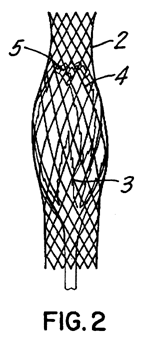 Delaware Valley Floral Group v. Shaw Rose Nets (
Delaware Valley Floral Group v. Shaw Rose Nets (
